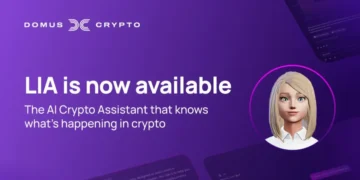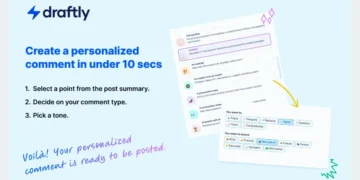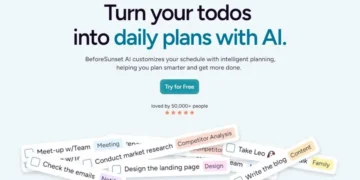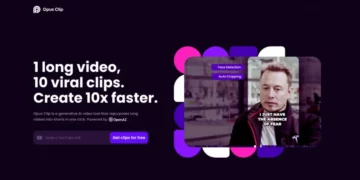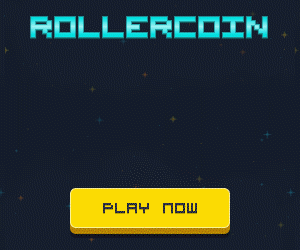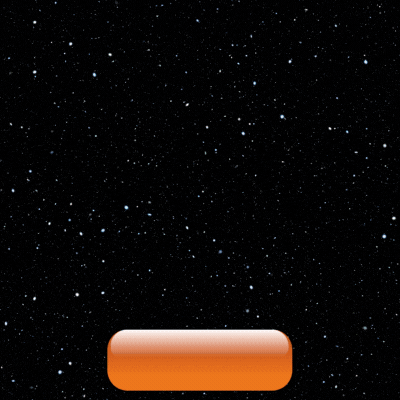In the rapidly evolving world of decentralized finance (DeFi) and blockchain technology, Web3 DAO Governance Hacks have become a growing concern. Decentralized Autonomous Organizations (DAOs) are designed to democratize decision-making through token-based voting systems but are not immune to vulnerabilities. From smart contract vulnerabilities in DAOs to governance exploits, these issues can lead to significant financial losses and undermine trust in decentralized systems.
Understanding how to prevent DAO governance attacks is critical if you’re involved in a DAO or considering building one. In this article, we’ll explore the most common pitfalls in DAO governance systems, analyze real-world examples like the 2016 DAO Hack, and provide actionable strategies for securing your decentralized organization. Ready to learn how to protect your DAO from governance exploits? Let’s dive in!
What is a DAO Governance Attack?
A DAO governance attack occurs when malicious actors exploit weaknesses in a DAO’s governance system to manipulate outcomes for personal gain. These attacks often target token voting mechanisms, enabling attackers to pass malicious proposals or drain funds.
Types of DAO Vulnerabilities in Web3
- Double Voting Attacks: Exploiting vulnerabilities to cast multiple votes.
- Flash Loan Manipulation: Borrowing large tokens to sway voting power temporarily.
- Smart Contract Bugs: Flaws in the underlying code that allow unauthorized access.
Lessons Learned from the DAO Hack 2016
The infamous DAO Hack 2016 serves as a cautionary tale for anyone involved in decentralized governance. In this incident, attackers exploited a reentrancy vulnerability in the smart contract and drained approximately $50 million worth of ether (ETH).
Key Takeaways
- Comprehensive code audits are critical for DAOs: Regular audits by reputable firms can uncover hidden vulnerabilities.
- Impact of governance attacks on DAO funds: A single exploit can devastate an organization’s treasury.
- Steps to Secure Decentralized Governance in Web3: Implement multi-signature wallets and proposal timeout.
How DAO governance works on the blockchain
At its core, DAO governance relies on token holders to vote on proposals that shape the future of the organization. However, this system isn’t foolproof. Centralized control, low voter turnout, and poorly written smart contracts can all create opportunities for exploitation.
Understanding DAO Token Voting Mechanisms
Token-based voting gives proportional influence to stakeholders based on their holdings. While this ensures decentralization, it also introduces risks:
- Risks of centralized control in DAOs: Large token holders (whales) can dominate decisions.
- Prevent double voting attacks in DAO proposals: Use unique identifiers for each voter to prevent double voting.
Best Practices for Web3 DAO Security
To secure your DAO against Web3 governance exploits, follow these best practices:
Framework for Countering DAO Governance Threats
- Regular audits: Partner with trusted companies that offer DAO security audit services.
- Multi-signature wallets: Require multiple approvals for money transfers.
- Time-Locked Proposals: Implement delays between proposal approval and execution to allow for community review..
Tools for Monitoring DAO Governance Risks
Platforms like OpenZeppelin Defender and Forta provide real-time monitoring for suspicious activity. Investing in such tools can protect your DAO from costly mistakes.
Emerging DAO Governance Threats in 2025
As Web3 continues to grow, so do the threats facing DAOs. Some emerging challenges include:
- The role of AI in preventing DAO governance attacks: Machine learning algorithms can detect unusual voting patterns.
- Impact of Web3 regulations on DAO governance: Governments around the world are beginning to regulate decentralized organizations, which could impact operational freedom.
Top DAO Hacks in Web3 History
Let’s examine some notable examples of Decentralized Autonomous Organization hacks :
Build Finance DAO Hack Analysis
In 2022, Build Finance suffered a devastating hack due to poor governance controls. Attackers exploited lax application requirements to approve malicious transactions.
This highlights the importance of robust safeguards.
Real-world examples of DAO governance failures
Other incidents, such as the Fei protocol exploit, underscore the need for continuous improvement in DAO design.
The Future of DAO Security in Decentralized Ecosystems
The future of DAO security lies in proactive measures:
- Invest in DAO governance solutions: Dedicate resources to research and development.
- Hire DAO governance developers: Skilled professionals can strengthen your infrastructure.
- Find Web3 DAO Security Experts: Work with specialists who understand the nuances of distributed systems.
By prioritizing security, DAOs can thrive in an increasingly competitive landscape.
Impact of Governance Attacks on DAO Funds
Governance attacks can have devastating consequences for a DAO’s treasury, often resulting in significant financial losses. These attacks exploit vulnerabilities in the governance structure, enabling malicious actors to manipulate proposals or siphon funds directly from the DAO’s wallet. For instance, in a recent breach on a Solana-based DAO, an attacker transferred $230,000 in treasury funds to their wallet unnoticed. Such incidents highlight the critical need for robust safeguards to protect DAO funds.
How Governance Attacks Threaten DAO Treasuries
- Unauthorized Fund Transfers: Attackers can exploit poorly written smart contracts or weak governance rules to approve malicious proposals that transfer funds.
- Example: The infamous DAO Hack 2016 saw $50 million worth of Ether drained due to a reentrancy vulnerability.
- Flash Loan Exploits: By borrowing large amounts of tokens temporarily, attackers can gain disproportionate voting power to pass harmful proposals.
- Sybil Attacks: Creating multiple fake accounts to accumulate governance tokens allows attackers to control decision-making processes.
Mitigating the Financial Risks
To minimize the impact of governance attacks on DAO funds, consider these strategies:
- Multi-signature wallets: Require multiple approvals for fund transfers, reducing the risk of unilateral actions.
- Time-locked proposals: Establish delays between proposal approval and execution to allow for community review and intervention.
- Regular Audits: Partner with trusted companies that offer DAO security audit services to identify and patch vulnerabilities before they’re exploited.
By implementing these measures, DAOs can protect their assets and maintain stakeholder trust. But are you sure your DAO has addressed all potential attack vectors?
The Role of AI in Preventing DAO Governance Attacks
As the Web3 ecosystem evolves, Artificial Intelligence (AI) is emerging as a powerful tool for enhancing DAO governance security. AI’s ability to analyze massive amounts of data and detect anomalies makes it invaluable in identifying potential threats before they escalate into full-blown attacks.
How AI Improves DAO Security
- Predictive security measures: AI algorithms can proactively scan smart contracts for vulnerabilities and predict potential exploits before they occur. This proactive approach is far more effective than reactive solutions.
- Anomaly detection: AI systems can monitor voting patterns and flag suspicious activity, such as sudden spikes in token accumulation or unusual voting behavior. This helps prevent Sybil attacks and other forms of manipulation.
- Efficient decision-making: AI tools can streamline governance processes by analyzing past proposals and outcomes, providing insights to improve future decision-making.
Real-world applications of AI in DAO governance include
- Forta Network: An AI-powered decentralized monitoring system that detects irregularities in real-time, helping DAOs respond quickly to threats.
- OpenZeppelin Defender: Combines AI-driven analytics with traditional security practices to provide comprehensive protection against governance exploits.
Challenges in Implementing AI in DAOs
While AI offers immense potential, integrating it into DAO governance isn’t without its challenges:
- Cost: Developing and deploying AI solutions can be expensive, especially for smaller DAOs.
- Complexity: Ensuring that AI models are transparent and understandable to non-technical members of the DAO is critical to adoption.
Despite these hurdles, the benefits of using AI to prevent Web3 DAO governance hacks far outweigh the costs.
FAQs
What is a Web3 vulnerability?
A Web3 vulnerability refers to weaknesses in decentralized applications (dApps) or protocols that can be exploited by hackers.
What is a DAO in Web3?
A DAO is a decentralized organization governed by smart contracts and token holders, allowing for collective decision-making without central authority.
What are the challenges of DAOs?
Challenges include low voter participation, smart contract bugs, and vulnerability to governance attacks.
What is the purpose of a governance token in a DAO?
Governance tokens grant holders the right to vote on proposals, ensuring decentralized control over the direction of the organization.
Can Web 3.0 be hacked?
While Web3 itself cannot be hacked, individual components such as dApps and DAOs remain vulnerable if not properly secured.
What protocol is closely associated with Web3?
Ethereum is the most prominent protocol associated with Web3 and powers many DAOs and dApps.
Why is Web3 risky?
Web3’s reliance on smart contracts and decentralized systems introduces new attack vectors, making it imperative to prioritize security.
What is the most common web vulnerability?
SQL injection remains one of the most common web vulnerabilities, although smart contract reentrancy is prevalent in Web3.
What is Avalanche in Web3?
Avalanche is a high-performance blockchain platform designed for scalable decentralized applications and custom subnets.
What are the vulnerabilities of ERC721?
ERC721 tokens used for NFTs can suffer from issues such as re-entrance, uncontrolled external calls, and metadata manipulation.
What is Web3 in Cybersecurity?
Web3 in cybersecurity focuses on securing decentralized networks, protecting user data, and mitigating smart contract risks.
What does Web3 mean?
Web3 represents the next generation of the Internet, characterized by decentralization, blockchain technology, and user sovereignty.
What is a web-based vulnerability?
A web-based vulnerability is any flaw in a website or application that allows attackers to compromise its functionality or data.
Conclusion
Protecting your DAO from Web3 DAO Governance Hacks requires vigilance, expertise, and a commitment to best practices. By implementing steps to secure decentralized governance in Web3, conducting regular audits, and staying informed about emerging threats, you can build a resilient organization capable of thriving in the decentralized future.
Ready to take action? Start by exploring tools for monitoring DAO governance risks or consulting with Web3 security experts to strengthen your defenses. Share this guide with your team to ensure everyone is equipped to prevent governance exploits.

